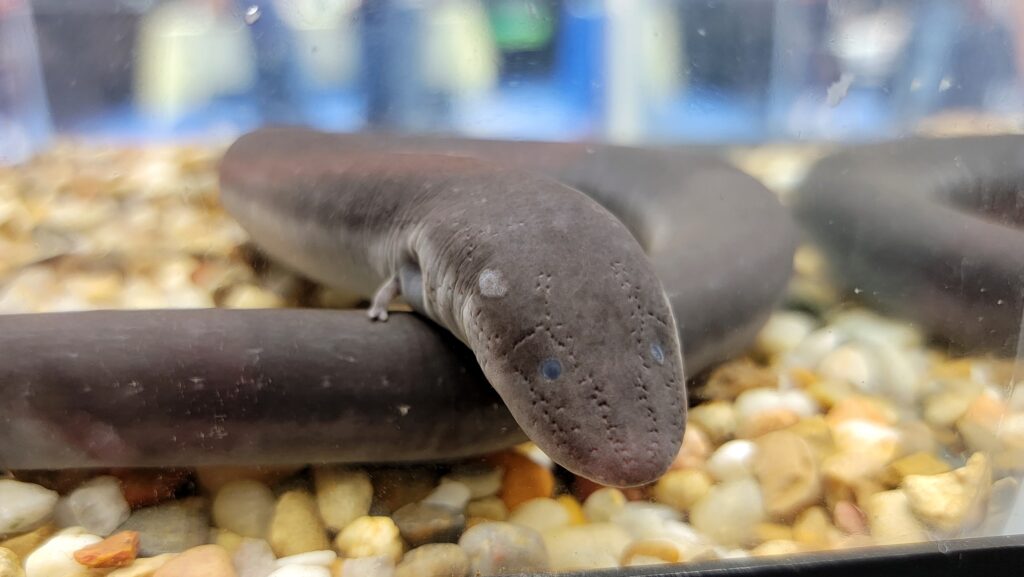Two-toed Amphiuma (Amphiuma means)
Two-toed Amphiuma (Amphiuma means)



Amphiumas (Family Amphiumidae)
Commonly (and misleadingly) called “congo eels,” amphiumas are amphibians rather than fish. The nickname likely comes from their eel-like appearance and confusion with the marine “congo eel,” an unrelated fish. Amphiumas lack external gills (unlike sirens), which adds to their resemblance to elongate fishes.
Identification:
All three species in the family occur in the southeastern United States and are distinguished by the number of toes on each of their two pairs of tiny limbs: one-toed, two-toed, or three-toed. The two-toed amphiuma (Amphiuma means) is the largest, reaching nearly four feet in length, making it the longest salamander species in the United States. Coloration is generally dark gray to black above, fading to lighter shades below.
Ecology & Reproduction:
Despite their aquatic form, amphiumas are not strictly water bound. They appear to lay eggs at the water–land interface rather than fully submerged. Amphiumas are known for their strong bite (non-venomous but painful) and should be handled with care. On the Savannah River Site and across their range, they inhabit aquatic systems with little or no current and feed opportunistically on a wide variety of prey, including invertebrates, fish, and even other amphiumas.
